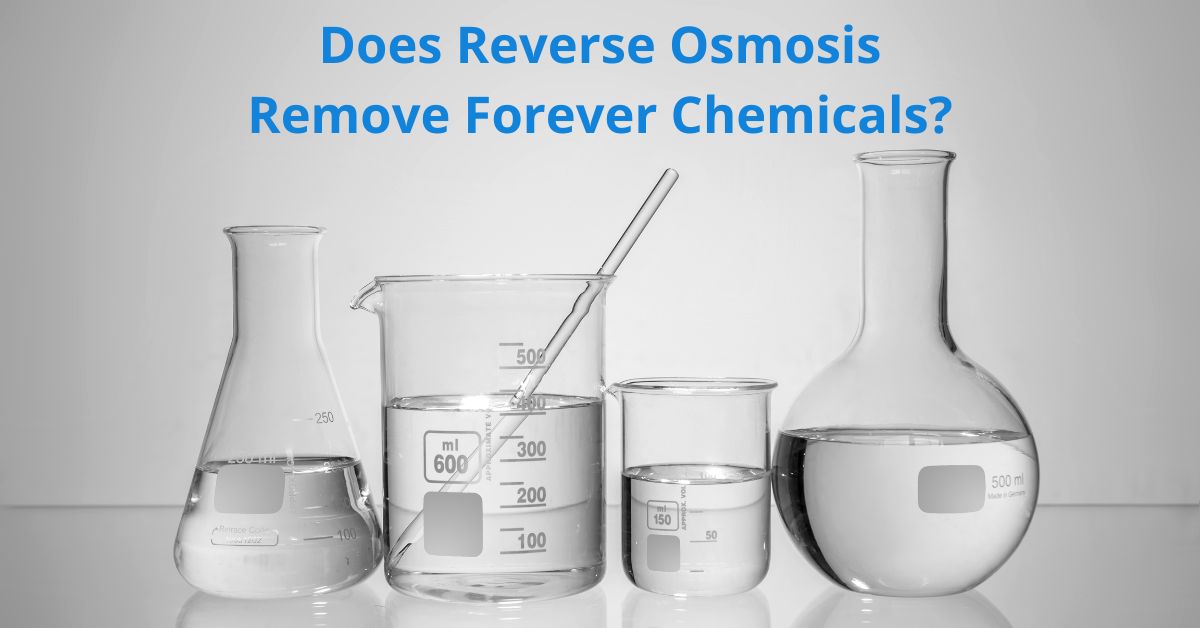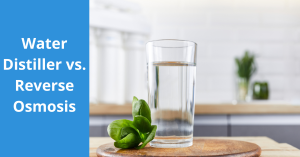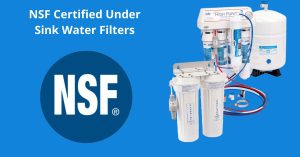As experts in water filtration systems we frequently receive inquiries regarding the most effective methods to guarantee clean, safe drinking water at home. One question that’s been popping up more frequently is about “forever chemicals” and whether reverse osmosis can remove them. Let’s explore how we can protect ourselves and our families from these persistent pollutants.
How to Remove Forever Chemicals from Water
First things first: what exactly are “forever chemicals”? The term refers to a group of man-made substances known as Per- and Polyfluoroalkyl Substances (PFAS). They’re called “forever chemicals” because they don’t break down easily in the environment or in our bodies. Since the 1940s, various industries have utilised these chemicals in everyday products, ranging from non-stick cookware to water-resistant clothing.
Unfortunately, PFAS have made their way into our water supplies, raising concerns about their potential health impacts. So, how can we remove them from our drinking water? Let’s explore the effectiveness of reverse osmosis filtration.
The Power of Reverse Osmosis Filtration
I’m excited to tell you that reverse osmosis (RO) is indeed one of the most effective methods for removing forever chemicals from water. Here’s why:
Extremely Fine Filtration: An RO filter uses a semi-permeable membrane with incredibly tiny pores. These pores are so small that they can block PFAS molecules while allowing water molecules to pass through.
Multi-Stage Filtration: Most RO systems, whether they’re undersink RO systems or countertop reverse osmosis filters, use multiple filtration stages. This comprehensive approach ensures that a wide range of contaminants, including PFAS, are removed.
Proven Effectiveness: Studies have shown that properly functioning RO filtration systems can remove more than 99% of PFAS compounds from water.
Types of Reverse Osmosis Systems for Home Use
Now that we know RO filtration is effective against forever chemicals, let’s look at the different types of systems available for home use:
Undersink RO System: This is the most common type of RO system for home use. Installed under your kitchen sink, it delivers filtered water via a dedicated faucet. These undersink water purifiers are excellent if you have the space and want a permanent solution.
Countertop RO Filter: If you’re renting or don’t want to modify your plumbing, a countertop reverse osmosis filter might be the perfect solution. You can easily connect these compact benchtop water filter units to your faucet and place them on your kitchen counter.
Countertop RO Water Filter
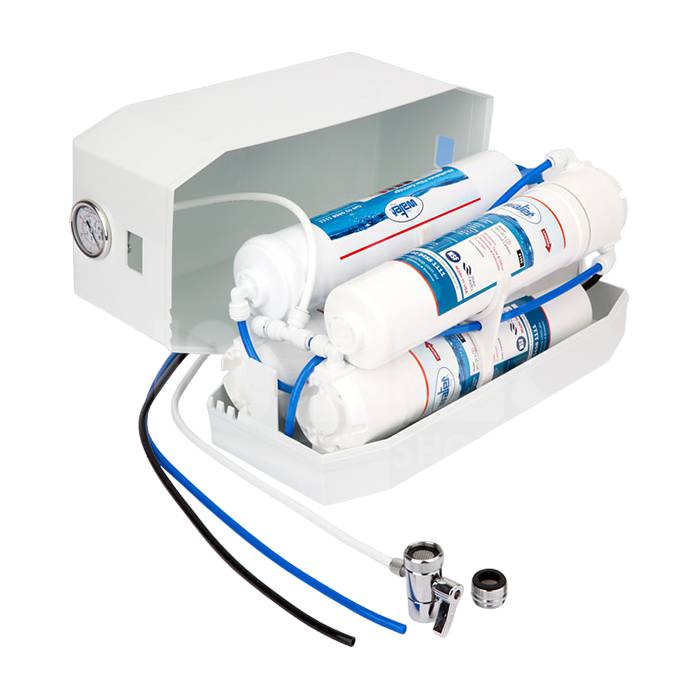
Undersink RO Water Filter
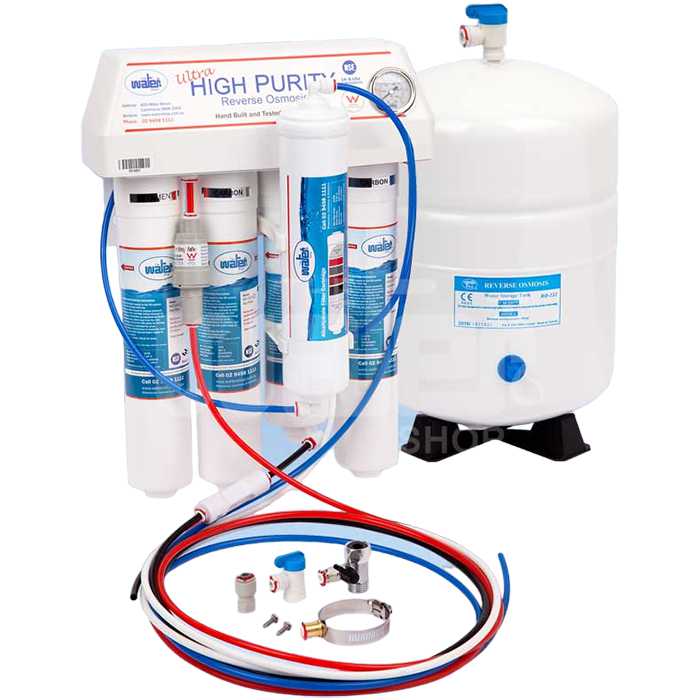
Choosing the Right RO System for Your Home
When selecting a reverse osmosis system for your home, consider the following factors:
Water Usage: How much filtered water do you need daily? This will help determine the size of the tank you need if choosing an undersink RO system, or if a compact benchtop system would suffice.
Available Space: Do you have room for an undersink water purifier, or would a countertop RO filter be more suitable? Benchtop water filters offer a good middle ground if you have limited counter space and can’t install an undersink system.
Installation: Are you comfortable with a more permanent installation, such as an undersink RO system, or do you prefer a plug-and-play solution, such as a countertop or benchtop water filter?
Maintenance Requirements: All RO filters require some maintenance, typically in the form of filter replacements. Make sure you’re comfortable with the maintenance schedule, which may vary between undersink water purifiers and benchtop models.
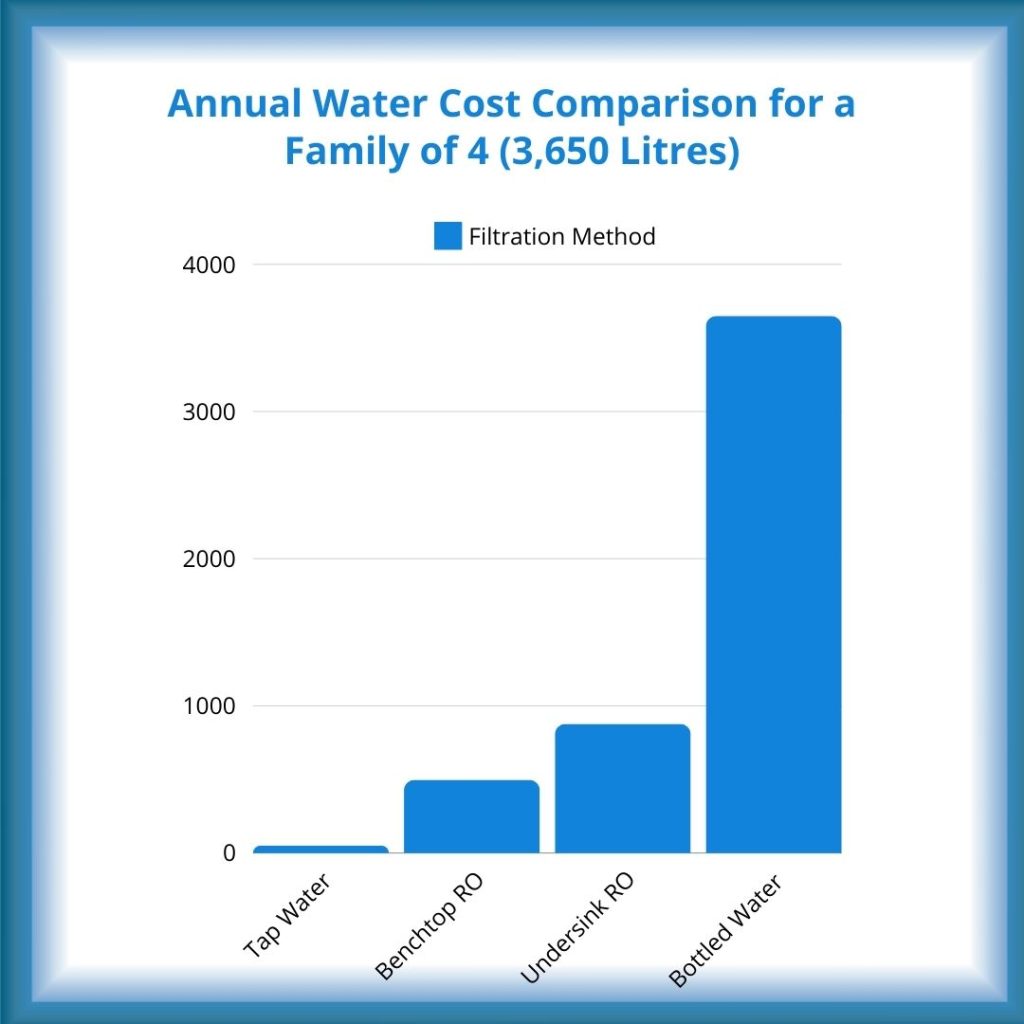
Cost: While there’s an upfront investment for the system and ongoing expenses for filter replacements, reverse osmosis filtration is undoubtedly more cost-effective in the long run compared to buying bottled water. This holds true whether you opt for a benchtop water filter, an undersink RO system, or a countertop model.
Let’s break it down: After the initial cost of about $700 for a quality undersink reverse osmosis system, you’re looking at an annual expense of approximately $250 for replacement cartridges. Compare this to the cost of bottled water, which can easily amount to thousands of dollars per year for a family.
Beyond Forever Chemicals: Other Benefits of RO Filtration
While we’re focusing on PFAS removal, it’s worth noting that a reverse osmosis system for home use offers many other benefits:
Removal of Other Contaminants: RO filtration can also remove other pollutants like lead, arsenic, nitrates, and more.
Improved Taste: Many people notice a significant improvement in the taste and clarity of their water after installing an RO filter.
Reduced Plastic Waste: By having clean water on tap, you’ll reduce your reliance on bottled water, helping to decrease plastic waste.
Peace of Mind: Knowing that your drinking water is being thoroughly filtered can provide reassurance about its safety.
Potential Drawbacks of RO Filtration
In order to provide a balanced perspective, it’s important to mention a few potential drawbacks to RO filtration:
Water Waste: RO systems do produce some wastewater as part of the filtration process. However, many modern systems are designed to minimise this waste. We like the idea of some of our eco-conscious customers to repurpose the small amount of wastewater. They nourish their gardens or use it for cleaning so that every drop serves a purpose.
Mineral Removal: Along with contaminants, RO also removes beneficial minerals from water. To address this, some systems include a remineralisation stage. For more information on this you may like our blog post Does Reverse Osmosis have Minerals?.
Slower Flow Rate: Let’s be clear: It is slow. RO-filtered water is produced more slowly than most other water filtration methods and definitely slower than unfiltered tap water, which might take some getting used to.
My Professional Recommendation
As someone who’s spent years in the water filtration industry, I strongly recommend considering a reverse osmosis system if you’re concerned about forever chemicals in your drinking water. Whether you choose a benchtop water filter, an undersink RO system, or a countertop reverse osmosis filter, you’ll be taking a significant step towards ensuring the safety of your water.
Remember, the best system for you depends on your specific circumstances. When making a decision, consider factors such as your water usage, available space, and budget.
As we continue to learn more about the impacts of forever chemicals and other emerging contaminants, I believe that technologies like reverse osmosis will play an increasingly important role in protecting our health and the health of our families.

